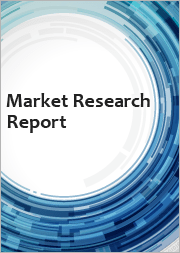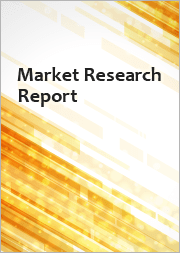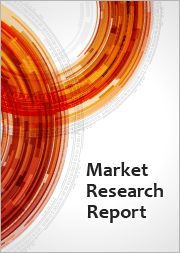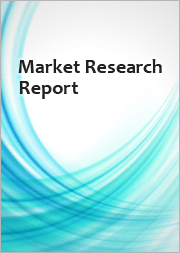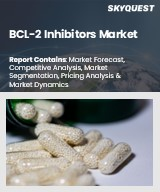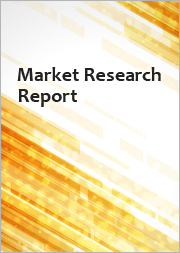
|
시장보고서
상품코드
1570828
세계의 안지오텐신 전환효소(ACE) 억제제 시장 : 약제 유형별, 질환 유형별, 투약 형태별, 유통 채널별, 환자 속성별 - 예측(2025-2030년)Angiotensin Converting Enzyme Inhibitors Market by Drug Type, Disease Type, Dosage Form, Distribution Channel, Patient Demographics - Global Forecast 2025-2030 |
||||||
안지오텐신 전환효소 억제제 시장은 2023년에 37억 달러로 평가되었고, 2024년에는 39억 2,000만 달러로 추정되며, CAGR 6.23%로 성장할 전망이고, 2030년에는 56억 5,000만 달러에 달할 것으로 예상됩니다.
안지오텐신 전환효소(ACE) 억제제는 주로 고혈압과 울혈성 심부전의 치료에 사용되는 약물의 한 유형입니다. ACE 억제제는 안지오텐신 I에서 안지오텐신 II로의 전환을 억제하여 혈관 확장과 혈압 감소를 초래합니다. ACE 억제제의 필요성은 고혈압과 심혈관계 질환의 세계 유행에 기인하고 있으며, 이러한 약물은 심혈관계의 건강을 관리하는 데 매우 중요하다고 밝혀졌습니다. ACE 억제제의 용도는 고혈압증에 그치지 않고, 당뇨병성 신증이나 심근경색 후의 치료에도, 치료 요법에 있어서의 중요성을 높이고 있습니다. 주요 최종 사용자는 병원, 클리닉 및 개인 환자를 포함하여 다양한 의료 환경에서 일관된 수요를 촉구합니다. 시장 성장을 가속하는 주요 요인으로는 생활 습관과 관련된 건강 상태의 발생률 상승, 심혈관 건강에 대한 의식 증가 등이 있습니다. 또한 만성 심혈관계 질환의 유병률 상승을 지원하는 세계 인구의 고령화도 시장 수요를 뒷받침하고 있습니다. 그러나, 제네릭 의약품의 경쟁으로 이어지는 특허 만료, 환자의 컴플라이언스를 제한할 가능성이 있는 기침이나 혈관 부종과 같은 부작용 등의 제한에 시장은 직면하고 있습니다. 규제상의 장애물과 엄격한 임상시험의 필요성은 시장 확대의 또 다른 과제가 되고 있습니다. 그럼에도 불구하고, 방출 프로파일 및 다른 고혈압 치료제와의 병용 요법과 같은 약물 전달 및 환자의 복약 충동을 개선하는 혁신적인 제형 기술을 개발할 기회가 존재합니다. 헬스케어 인프라가 개선되고 있는 신흥 시장을 모니터링하는 것도 잠재적인 성장 가능성을 제공합니다. 이러한 기회를 활용하기 위해 기업은 유통 확대를 위한 전략적 파트너십에 주력하고, 보다 새롭고 효율적인 제제의 연구개발에 투자하고, 원격 환자 모니터링 및 어드레싱 추적을 위한 디지털 건강 기술을 탐구할 필요가 있습니다. 시장은 본질적으로 경쟁적이며 끊임없는 기술 혁신과 규제 환경 및 환자의 요구에 적응해야 하므로 세계 시장 상황에서 관련성과 경쟁 우위를 유지해야 합니다.
| 주요 시장 통계 | |
|---|---|
| 기준년(2023) | 37억 달러 |
| 예측년(2024) | 39억 2,000만 달러 |
| 예측년(2030) | 56억 5,000만 달러 |
| CAGR(%) | 6.23% |
시장 역학 : 빠르게 진화하는 안지오텐신 전환효소 억제제 시장의 주요 시장 인사이트 공개
안지오텐신 전환효소 억제제 시장은 수요 및 공급의 역동적인 상호 작용에 의해 변모하고 있습니다. 이러한 시장 역학의 진화를 이해함으로써 기업은 충분한 정보를 바탕으로 투자결정, 전략적 의사결정, 새로운 비즈니스 기회를 획득할 수 있습니다. 이러한 동향을 종합적으로 파악함으로써 기업은 정치적, 지리적, 기술적, 사회적, 경제적 영역에 걸친 다양한 리스크를 경감할 수 있을 뿐만 아니라, 소비자 행동과 그것이 제조 비용 또는 구매 동향에 미치는 영향을보다 명확하게 이해할 수 있습니다.
- 시장 성장 촉진요인
- 세계의 심혈관 질환과 고혈압의 유병률 증가로 효과적인 치료 옵션에 대한 수요 증가
- 안지오텐신 전환효소 억제제를 필요로 하는 만성 질환의 이환율 증가에 기여하는 고령화 인구 증가
- 안지오텐신 전환효소 억제제의 효능을 높이는 의약품 연구개발의 진보
- 치료 프로토콜에서 안지오텐신 전환효소 억제제의 사용을 지원하는 정부의 이니셔티브 및 건강 관리 정책
- 시장 성장 억제요인
- 안지오텐신 전환효소 억제제 수요 감소 가능성
- 안지오텐신 전환효소 억제제의 장기 사용에 수반되는 부작용이 환자의 어드히어런스를 저하시킬 가능성
- 시장 기회
- ACE 억제제의 생체이용률 향상과 표적 전달을 위한 첨단 제형 기술
- 유전자 프로파일링에 기초한 맞춤형 ACE 억제제 치료에 의한 맞춤형 의료 기회
- 신장병이나 당뇨병 등의 병존 질환의 관리에 있어서 ACE 억제제의 용도 확대
- 시장의 과제
- 대체 요법이나 제네릭 의약품과의 경쟁이 안지오텐신 전환효소 억제제 시장 우위성에 과제
- 환자의 어드히어런스와 교육의 문제가 안지오텐신 전환효소 억제제의 효능 및 시장 침투에 영향
Porter's Five Forces : 안지오텐신 전환효소 억제제 시장을 탐색하는 전략 도구
Porter's Five Forces 프레임 워크는 안지오텐신 전환효소 억제제 시장 경쟁 구도를 이해하는 중요한 도구입니다. Porter's Five Forces 프레임 워크는 기업의 경쟁력을 평가하고 전략적 기회를 탐구하는 명확한 기술을 제공합니다. 이 프레임 워크는 기업이 시장 내 세력도를 평가하고 신규 사업의 수익성을 결정하는 데 도움이 됩니다. 이러한 인사이트를 통해 기업은 자사의 강점을 활용하고, 약점을 해결하고, 잠재적인 과제를 피할 수 있으며, 보다 강인한 시장에서의 포지셔닝을 보장할 수 있습니다.
PESTLE 분석 : 안지오텐신 전환효소 억제제 시장에서 외부로부터의 영향 파악
외부 거시 환경 요인은 안지오텐신 전환효소 억제제 시장의 성과 역학을 형성하는데 매우 중요한 역할을 합니다. 정치적, 경제적, 사회적, 기술적, 법적, 환경적 요인 분석은 이러한 영향을 탐색하는 데 필요한 정보를 제공합니다. PESTLE 요인을 조사함으로써 기업은 잠재적인 위험과 기회를 더 잘 이해할 수 있습니다. 이 분석을 통해 기업은 규제, 소비자 선호, 경제 동향의 변화를 예측하고 앞으로 예상되는 적극적인 의사 결정을 할 준비를 할 수 있습니다.
시장 점유율 분석 : 안지오텐신 전환효소 억제제 시장 경쟁 구도 파악
안지오텐신 전환효소 억제제 시장의 상세한 시장 점유율 분석을 통해 공급업체의 성과를 종합적으로 평가할 수 있습니다. 기업은 수익, 고객 기반, 성장률 등 주요 지표를 비교하여 경쟁 포지셔닝을 밝힐 수 있습니다. 이 분석을 통해 시장 집중, 단편화, 통합 동향을 밝혀내고 벤더들은 경쟁이 치열해지는 가운데 자사의 지위를 높이는 전략적 의사 결정을 내리는 데 필요한 지식을 얻을 수 있습니다.
FPNV 포지셔닝 매트릭스 : 안지오텐신 전환효소 억제제 시장에서 공급업체의 성능 평가
FPNV Positioning Matrix는 안지오텐신 전환효소 억제제 시장에서 공급업체를 평가하는 중요한 도구입니다. 이 행렬을 통해 비즈니스 조직은 공급업체의 비즈니스 전략과 제품 만족도를 기준으로 평가하여 목표에 맞는 충분한 정보를 바탕으로 의사 결정을 내릴 수 있습니다. 네 가지 사분면을 통해 공급업체를 명확하고 정확하게 세분화하여 전략 목표에 가장 적합한 파트너 및 솔루션을 파악할 수 있습니다.
전략 분석 및 추천 : 안지오텐신 전환효소 억제제 시장에서 성공에 대한 경로를 그립니다.
안지오텐신 전환효소 억제제 시장의 전략적 분석은 세계 시장에서의 존재를 강화하려는 기업에게 필수적입니다. 주요 자원, 능력 및 성과 지표를 검토함으로써 기업은 성장 기회를 파악하고 개선을 위해 노력할 수 있습니다. 이러한 접근 방식을 통해 경쟁 구도에서 과제를 극복하고 새로운 비즈니스 기회를 활용하여 장기적인 성공을 거둘 수 있는 체제를 구축할 수 있습니다.
이 보고서는 주요 관심 분야를 포괄하는 시장의 종합적인 분석을 제공합니다.
1. 시장 침투 : 현재 시장 환경의 상세한 검토, 주요 기업의 광범위한 데이터, 시장 도달범위 및 전반적인 영향력을 평가합니다.
2. 시장 개척도 : 신흥 시장의 성장 기회를 파악하고 기존 분야의 확장 가능성을 평가하며 미래 성장을 위한 전략적 로드맵을 제공합니다.
3. 시장 다양화 : 최근 제품 출시, 미개척 지역, 업계의 주요 진보, 시장을 형성하는 전략적 투자를 분석합니다.
4. 경쟁 평가 및 정보 : 경쟁 구도를 철저히 분석하여 시장 점유율, 사업 전략, 제품 포트폴리오, 인증, 규제 당국 승인, 특허 동향, 주요 기업의 기술 진보 등을 검증합니다.
5. 제품 개발 및 혁신 : 미래 시장 성장을 가속할 것으로 예상되는 최첨단 기술, 연구개발 활동, 제품 혁신을 강조합니다.
또한 이해관계자가 충분한 정보를 얻고 의사결정을 할 수 있도록 중요한 질문에 대답하고 있습니다.
1. 현재 시장 규모 및 향후 성장 예측은?
2. 최고의 투자 기회를 제공하는 제품, 부문 및 지역은 어디입니까?
3. 시장을 형성하는 주요 기술 동향 및 규제의 영향은?
4. 주요 벤더의 시장 점유율 및 경쟁 포지션은?
5. 벤더 시장 진입 및 철수 전략의 원동력이 되는 수익원과 전략적 기회는 무엇인가?
목차
제1장 서문
제2장 조사 방법
제3장 주요 요약
제4장 시장 개요
제5장 시장 인사이트
- 시장 역학
- 성장 촉진요인
- 심혈관질환과 고혈압의 이환율이 세계적으로 상승으로 효과적인 치료법 수요 증가
- 고령화 인구 증가로 치료가 필요한 만성 질환의 발생률 증가
- 의약품 연구 개발의 진보에 의해 안지오텐신 전환효소 억제제의 효능 향상
- 치료 프로토콜에서 안지오텐신 전환효소 억제제의 사용을 지원하는 정부의 이니셔티브와 건강 관리 정책
- 억제요인
- 고혈압 대체 치료의 가용성과 선택 증가로 안지오텐신 전환효소 억제제에 대한 수요 감소 가능성
- 안지오텐신 전환효소 억제제의 장기간 사용에 따른 부작용으로 환자의 복약 준수 저하 가능성
- 기회
- ACE 억제제의 생물학적 이용능력과 표적 전달을 개선하는 첨단 제형 기술
- 유전자 프로파일링에 기초한 커스터마이즈 된 ACE 억제제 치료에 의한 맞춤형 의료의 기회
- 신장병이나 당뇨병 등의 합병증의 관리에 있어서의 ACE 억제제의 적용 확대
- 과제
- 대체 요법이나 제네릭 의약품과의 경쟁에 의해 안지오텐신 전환효소 억제제 시장 지배력이 과제
- 환자 준수 및 교육 문제는 안지오텐신 전환효소 억제제의 효능 및 시장 침투에 영향
- 성장 촉진요인
- 시장 세분화 분석
- Porter's Five Forces 분석
- PESTLE 분석
- 정치적
- 경제
- 사교
- 기술적
- 법률상
- 환경
제6장 안지오텐신 전환효소 억제제 시장 : 약제 유형별
- 비특이적 ACE 억제제
- 특정 ACE 억제제
제7장 안지오텐신 전환효소 억제제 시장 : 질환 유형별
- 심장병
- 만성 심부전
- 관상동맥질환
- 고혈압
- 원발성 고혈압
- 2차성 고혈압
- 신장 질환
- 만성 신장병
- 당뇨병성 신증
제8장 안지오텐신 전환효소 억제제 시장 : 투여형별
- 캡슐
- 주사 가능
- 태블릿
제9장 안지오텐신 전환효소 억제제 시장 : 유통 채널별
- 병원 약국
- 온라인 약국
- 소매 약국
제10장 안지오텐신 전환효소 억제제 시장 : 환자 속성별
- 성인
- 고령자
- 소아
제11장 아메리카의 안지오텐신 전환효소 억제제 시장
- 아르헨티나
- 브라질
- 캐나다
- 멕시코
- 미국
제12장 아시아태평양의 안지오텐신 전환효소 억제제 시장
- 호주
- 중국
- 인도
- 인도네시아
- 일본
- 말레이시아
- 필리핀
- 싱가포르
- 한국
- 대만
- 태국
- 베트남
제13장 유럽, 중동 및 아프리카의 안지오텐신 전환효소 억제제 시장
- 덴마크
- 이집트
- 핀란드
- 프랑스
- 독일
- 이스라엘
- 이탈리아
- 네덜란드
- 나이지리아
- 노르웨이
- 폴란드
- 카타르
- 러시아
- 사우디아라비아
- 남아프리카
- 스페인
- 스웨덴
- 스위스
- 터키
- 아랍에미리트(UAE)
- 영국
제14장 경쟁 구도
- 시장 점유율 분석(2023년)
- FPNV 포지셔닝 매트릭스(2023년)
- 경쟁 시나리오 분석
- 전략 분석 및 제안
The Angiotensin Converting Enzyme Inhibitors Market was valued at USD 3.70 billion in 2023, expected to reach USD 3.92 billion in 2024, and is projected to grow at a CAGR of 6.23%, to USD 5.65 billion by 2030.
Angiotensin Converting Enzyme (ACE) Inhibitors are a class of medications primarily used to treat hypertension and congestive heart failure. They work by inhibiting the conversion of angiotensin I to angiotensin II, leading to vasodilation and reduced blood pressure. The necessity of ACE inhibitors stems from the global prevalence of hypertension and cardiovascular diseases, positioning these drugs as crucial in managing cardiovascular health. Their application extends beyond hypertension to include diabetic nephropathy and post-myocardial infarction treatment, enhancing their significance in therapeutic regimens. The primary end-users include hospitals, clinics, and individual patients, prompting consistent demand across diverse healthcare settings. Key factors driving market growth include the rising incidence of lifestyle-related health conditions and increasing awareness about cardiovascular health. Additionally, the aging global population underpinning a higher prevalence of chronic cardiovascular conditions propels market demand. However, the market faces limitations such as patent expirations leading to generic drug competition, and side effects like cough and angioedema, which may limit patient compliance. Regulatory hurdles and the need for rigorous clinical trials further challenge market expansion. Nonetheless, opportunities exist in developing innovative formulation techniques to improve drug delivery and patient adherence, such as release profiles and combination therapies with other antihypertensives. Monitoring emerging markets where healthcare infrastructure is improving also offers potential growth avenues. To capitalize on these opportunities, companies should focus on strategic partnerships for expanded distribution, invest in research and development for newer, more efficient drug formulations, and explore digital health technologies for remote patient monitoring and adherence tracking. The market is inherently competitive, necessitating constant innovation and adaptation to regulatory environments and patient needs, thus maintaining relevance and competitive advantage in the global market landscape.
| KEY MARKET STATISTICS | |
|---|---|
| Base Year [2023] | USD 3.70 billion |
| Estimated Year [2024] | USD 3.92 billion |
| Forecast Year [2030] | USD 5.65 billion |
| CAGR (%) | 6.23% |
Market Dynamics: Unveiling Key Market Insights in the Rapidly Evolving Angiotensin Converting Enzyme Inhibitors Market
The Angiotensin Converting Enzyme Inhibitors Market is undergoing transformative changes driven by a dynamic interplay of supply and demand factors. Understanding these evolving market dynamics prepares business organizations to make informed investment decisions, refine strategic decisions, and seize new opportunities. By gaining a comprehensive view of these trends, business organizations can mitigate various risks across political, geographic, technical, social, and economic domains while also gaining a clearer understanding of consumer behavior and its impact on manufacturing costs and purchasing trends.
- Market Drivers
- Rising prevalence of cardiovascular diseases and hypertension globally driving demand for effective treatment options
- Growing aging population contributing to increased incidence of chronic conditions requiring angiotensin converting enzyme inhibitors
- Advancements in pharmaceutical research and development enhancing efficacy of angiotensin converting enzyme inhibitors
- Government initiatives and healthcare policies supporting the use of angiotensin converting enzyme inhibitors in treatment protocols
- Market Restraints
- Increasing availability and preference for alternative treatments for hypertension may reduce demand for angiotensin converting enzyme inhibitors
- Adverse side effects associated with prolonged use of angiotensin converting enzyme inhibitors may reduce patient adherence
- Market Opportunities
- Advanced formulation techniques for improved bioavailability and targeted delivery of ace inhibitors
- Opportunities in personalized medicine with customized ace inhibitor treatments based on genetic profiling
- Growing application of ace inhibitors in managing comorbid conditions such as kidney disease and diabetes
- Market Challenges
- Competition from alternative therapies and generic drugs challenges the market dominance of angiotensin converting enzyme inhibitors
- Patient adherence and education issues impact the effectiveness and market uptake of angiotensin converting enzyme inhibitors
Porter's Five Forces: A Strategic Tool for Navigating the Angiotensin Converting Enzyme Inhibitors Market
Porter's five forces framework is a critical tool for understanding the competitive landscape of the Angiotensin Converting Enzyme Inhibitors Market. It offers business organizations with a clear methodology for evaluating their competitive positioning and exploring strategic opportunities. This framework helps businesses assess the power dynamics within the market and determine the profitability of new ventures. With these insights, business organizations can leverage their strengths, address weaknesses, and avoid potential challenges, ensuring a more resilient market positioning.
PESTLE Analysis: Navigating External Influences in the Angiotensin Converting Enzyme Inhibitors Market
External macro-environmental factors play a pivotal role in shaping the performance dynamics of the Angiotensin Converting Enzyme Inhibitors Market. Political, Economic, Social, Technological, Legal, and Environmental factors analysis provides the necessary information to navigate these influences. By examining PESTLE factors, businesses can better understand potential risks and opportunities. This analysis enables business organizations to anticipate changes in regulations, consumer preferences, and economic trends, ensuring they are prepared to make proactive, forward-thinking decisions.
Market Share Analysis: Understanding the Competitive Landscape in the Angiotensin Converting Enzyme Inhibitors Market
A detailed market share analysis in the Angiotensin Converting Enzyme Inhibitors Market provides a comprehensive assessment of vendors' performance. Companies can identify their competitive positioning by comparing key metrics, including revenue, customer base, and growth rates. This analysis highlights market concentration, fragmentation, and trends in consolidation, offering vendors the insights required to make strategic decisions that enhance their position in an increasingly competitive landscape.
FPNV Positioning Matrix: Evaluating Vendors' Performance in the Angiotensin Converting Enzyme Inhibitors Market
The Forefront, Pathfinder, Niche, Vital (FPNV) Positioning Matrix is a critical tool for evaluating vendors within the Angiotensin Converting Enzyme Inhibitors Market. This matrix enables business organizations to make well-informed decisions that align with their goals by assessing vendors based on their business strategy and product satisfaction. The four quadrants provide a clear and precise segmentation of vendors, helping users identify the right partners and solutions that best fit their strategic objectives.
Strategy Analysis & Recommendation: Charting a Path to Success in the Angiotensin Converting Enzyme Inhibitors Market
A strategic analysis of the Angiotensin Converting Enzyme Inhibitors Market is essential for businesses looking to strengthen their global market presence. By reviewing key resources, capabilities, and performance indicators, business organizations can identify growth opportunities and work toward improvement. This approach helps businesses navigate challenges in the competitive landscape and ensures they are well-positioned to capitalize on newer opportunities and drive long-term success.
Key Company Profiles
The report delves into recent significant developments in the Angiotensin Converting Enzyme Inhibitors Market, highlighting leading vendors and their innovative profiles. These include AbbVie Inc., Allergan plc, Amgen Inc., AstraZeneca PLC, Bayer AG, Boehringer Ingelheim GmbH, Bristol-Myers Squibb Company, Daiichi Sankyo Company, Limited, Eli Lilly and Company, Gilead Sciences, Inc., GlaxoSmithKline plc, Johnson & Johnson, Merck & Co., Inc., Mylan N.V., Novartis AG, Pfizer Inc., Roche Holding AG, Sanofi S.A., Takeda Pharmaceutical Company Limited, and Teva Pharmaceutical Industries Ltd..
Market Segmentation & Coverage
This research report categorizes the Angiotensin Converting Enzyme Inhibitors Market to forecast the revenues and analyze trends in each of the following sub-markets:
- Based on Drug Type, market is studied across Non-Specific ACE Inhibitors and Specific ACE Inhibitors.
- Based on Disease Type, market is studied across Heart Diseases, Hypertension, and Kidney Diseases. The Heart Diseases is further studied across Chronic Heart Failure and Coronary Artery Disease. The Hypertension is further studied across Primary Hypertension and Secondary Hypertension. The Kidney Diseases is further studied across Chronic Kidney Diseases and Diabetic Nephropathy.
- Based on Dosage Form, market is studied across Capsules, Injectable, and Tablets.
- Based on Distribution Channel, market is studied across Hospital Pharmacies, Online Pharmacies, and Retail Pharmacies.
- Based on Patient Demographics, market is studied across Adult, Geriatric, and Pediatric.
- Based on Region, market is studied across Americas, Asia-Pacific, and Europe, Middle East & Africa. The Americas is further studied across Argentina, Brazil, Canada, Mexico, and United States. The United States is further studied across California, Florida, Illinois, New York, Ohio, Pennsylvania, and Texas. The Asia-Pacific is further studied across Australia, China, India, Indonesia, Japan, Malaysia, Philippines, Singapore, South Korea, Taiwan, Thailand, and Vietnam. The Europe, Middle East & Africa is further studied across Denmark, Egypt, Finland, France, Germany, Israel, Italy, Netherlands, Nigeria, Norway, Poland, Qatar, Russia, Saudi Arabia, South Africa, Spain, Sweden, Switzerland, Turkey, United Arab Emirates, and United Kingdom.
The report offers a comprehensive analysis of the market, covering key focus areas:
1. Market Penetration: A detailed review of the current market environment, including extensive data from top industry players, evaluating their market reach and overall influence.
2. Market Development: Identifies growth opportunities in emerging markets and assesses expansion potential in established sectors, providing a strategic roadmap for future growth.
3. Market Diversification: Analyzes recent product launches, untapped geographic regions, major industry advancements, and strategic investments reshaping the market.
4. Competitive Assessment & Intelligence: Provides a thorough analysis of the competitive landscape, examining market share, business strategies, product portfolios, certifications, regulatory approvals, patent trends, and technological advancements of key players.
5. Product Development & Innovation: Highlights cutting-edge technologies, R&D activities, and product innovations expected to drive future market growth.
The report also answers critical questions to aid stakeholders in making informed decisions:
1. What is the current market size, and what is the forecasted growth?
2. Which products, segments, and regions offer the best investment opportunities?
3. What are the key technology trends and regulatory influences shaping the market?
4. How do leading vendors rank in terms of market share and competitive positioning?
5. What revenue sources and strategic opportunities drive vendors' market entry or exit strategies?
Table of Contents
1. Preface
- 1.1. Objectives of the Study
- 1.2. Market Segmentation & Coverage
- 1.3. Years Considered for the Study
- 1.4. Currency & Pricing
- 1.5. Language
- 1.6. Stakeholders
2. Research Methodology
- 2.1. Define: Research Objective
- 2.2. Determine: Research Design
- 2.3. Prepare: Research Instrument
- 2.4. Collect: Data Source
- 2.5. Analyze: Data Interpretation
- 2.6. Formulate: Data Verification
- 2.7. Publish: Research Report
- 2.8. Repeat: Report Update
3. Executive Summary
4. Market Overview
5. Market Insights
- 5.1. Market Dynamics
- 5.1.1. Drivers
- 5.1.1.1. Rising prevalence of cardiovascular diseases and hypertension globally driving demand for effective treatment options
- 5.1.1.2. Growing aging population contributing to increased incidence of chronic conditions requiring angiotensin converting enzyme inhibitors
- 5.1.1.3. Advancements in pharmaceutical research and development enhancing efficacy of angiotensin converting enzyme inhibitors
- 5.1.1.4. Government initiatives and healthcare policies supporting the use of angiotensin converting enzyme inhibitors in treatment protocols
- 5.1.2. Restraints
- 5.1.2.1. Increasing availability and preference for alternative treatments for hypertension may reduce demand for angiotensin converting enzyme inhibitors
- 5.1.2.2. Adverse side effects associated with prolonged use of angiotensin converting enzyme inhibitors may reduce patient adherence
- 5.1.3. Opportunities
- 5.1.3.1. Advanced formulation techniques for improved bioavailability and targeted delivery of ace inhibitors
- 5.1.3.2. Opportunities in personalized medicine with customized ace inhibitor treatments based on genetic profiling
- 5.1.3.3. Growing application of ace inhibitors in managing comorbid conditions such as kidney disease and diabetes
- 5.1.4. Challenges
- 5.1.4.1. Competition from alternative therapies and generic drugs challenges the market dominance of angiotensin converting enzyme inhibitors
- 5.1.4.2. Patient adherence and education issues impact the effectiveness and market uptake of angiotensin converting enzyme inhibitors
- 5.1.1. Drivers
- 5.2. Market Segmentation Analysis
- 5.3. Porter's Five Forces Analysis
- 5.3.1. Threat of New Entrants
- 5.3.2. Threat of Substitutes
- 5.3.3. Bargaining Power of Customers
- 5.3.4. Bargaining Power of Suppliers
- 5.3.5. Industry Rivalry
- 5.4. PESTLE Analysis
- 5.4.1. Political
- 5.4.2. Economic
- 5.4.3. Social
- 5.4.4. Technological
- 5.4.5. Legal
- 5.4.6. Environmental
6. Angiotensin Converting Enzyme Inhibitors Market, by Drug Type
- 6.1. Introduction
- 6.2. Non-Specific ACE Inhibitors
- 6.3. Specific ACE Inhibitors
7. Angiotensin Converting Enzyme Inhibitors Market, by Disease Type
- 7.1. Introduction
- 7.2. Heart Diseases
- 7.2.1. Chronic Heart Failure
- 7.2.2. Coronary Artery Disease
- 7.3. Hypertension
- 7.3.1. Primary Hypertension
- 7.3.2. Secondary Hypertension
- 7.4. Kidney Diseases
- 7.4.1. Chronic Kidney Diseases
- 7.4.2. Diabetic Nephropathy
8. Angiotensin Converting Enzyme Inhibitors Market, by Dosage Form
- 8.1. Introduction
- 8.2. Capsules
- 8.3. Injectable
- 8.4. Tablets
9. Angiotensin Converting Enzyme Inhibitors Market, by Distribution Channel
- 9.1. Introduction
- 9.2. Hospital Pharmacies
- 9.3. Online Pharmacies
- 9.4. Retail Pharmacies
10. Angiotensin Converting Enzyme Inhibitors Market, by Patient Demographics
- 10.1. Introduction
- 10.2. Adult
- 10.3. Geriatric
- 10.4. Pediatric
11. Americas Angiotensin Converting Enzyme Inhibitors Market
- 11.1. Introduction
- 11.2. Argentina
- 11.3. Brazil
- 11.4. Canada
- 11.5. Mexico
- 11.6. United States
12. Asia-Pacific Angiotensin Converting Enzyme Inhibitors Market
- 12.1. Introduction
- 12.2. Australia
- 12.3. China
- 12.4. India
- 12.5. Indonesia
- 12.6. Japan
- 12.7. Malaysia
- 12.8. Philippines
- 12.9. Singapore
- 12.10. South Korea
- 12.11. Taiwan
- 12.12. Thailand
- 12.13. Vietnam
13. Europe, Middle East & Africa Angiotensin Converting Enzyme Inhibitors Market
- 13.1. Introduction
- 13.2. Denmark
- 13.3. Egypt
- 13.4. Finland
- 13.5. France
- 13.6. Germany
- 13.7. Israel
- 13.8. Italy
- 13.9. Netherlands
- 13.10. Nigeria
- 13.11. Norway
- 13.12. Poland
- 13.13. Qatar
- 13.14. Russia
- 13.15. Saudi Arabia
- 13.16. South Africa
- 13.17. Spain
- 13.18. Sweden
- 13.19. Switzerland
- 13.20. Turkey
- 13.21. United Arab Emirates
- 13.22. United Kingdom
14. Competitive Landscape
- 14.1. Market Share Analysis, 2023
- 14.2. FPNV Positioning Matrix, 2023
- 14.3. Competitive Scenario Analysis
- 14.4. Strategy Analysis & Recommendation
Companies Mentioned
- 1. AbbVie Inc.
- 2. Allergan plc
- 3. Amgen Inc.
- 4. AstraZeneca PLC
- 5. Bayer AG
- 6. Boehringer Ingelheim GmbH
- 7. Bristol-Myers Squibb Company
- 8. Daiichi Sankyo Company, Limited
- 9. Eli Lilly and Company
- 10. Gilead Sciences, Inc.
- 11. GlaxoSmithKline plc
- 12. Johnson & Johnson
- 13. Merck & Co., Inc.
- 14. Mylan N.V.
- 15. Novartis AG
- 16. Pfizer Inc.
- 17. Roche Holding AG
- 18. Sanofi S.A.
- 19. Takeda Pharmaceutical Company Limited
- 20. Teva Pharmaceutical Industries Ltd.






